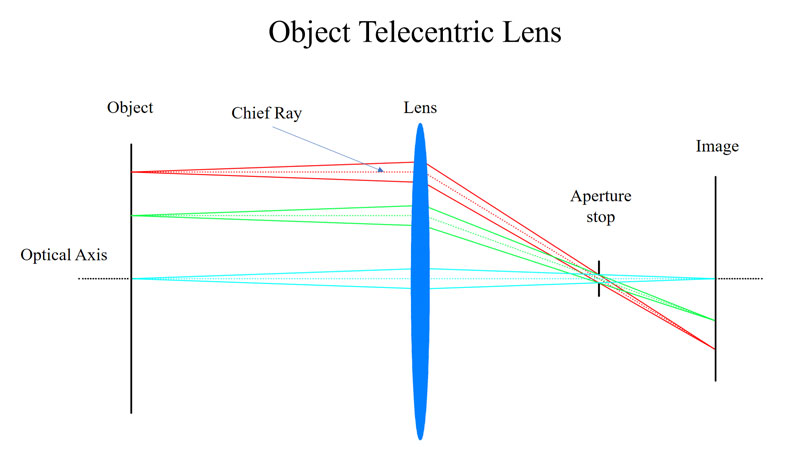Machine Vision Telecentric Lens
(2023年04月07日)https://www.canrilloptics.com/products/telecentric-lens/
A Telecentric lens is a kind of lens that the chief rays are parallel to the optical axis. There are three kinds of telecentric lens, that is the object-space telecentric lens, image-space telecentric lens, and the bi-telecentric lens. Telecentric lens is always the core business of Canrill Lens. After continuous research and development for 11 years, Canrill has successfully developed 1700+ kinds of lenses, and the number is still increasing, to meet the diverse and growing applications at the best telecentric lens price.
Difference Between Object Space Telecentric Lens And Bi Telecentric Lens
Telecentric lenses have two types of telecentricity: object space and image space telecentricity (referring to the entrance and exit pupil positions, respectively). Therefore, telecentric lenses are divided into: object space telecentric lens, image space telecentric lens, and bi telecentric lens.
Object Space Telecentric Lens
In general, a machine vision telecentric lens refers to an object space telecentric lens. If the entrance pupil of the lens is located at an infinite position in the image side (all objects behind the objective lens), it can be called an object space telecentric lens. The chief ray originated from optical axis is parallel with optical axis in object side ( or to say have very small angle θ which is called telecentricity in telecentric lens specs), while in image side is not parallel.
In the optical design, object space telecentricity is achieved by placing the system's iris diaphragm at the intersection of the front-end groups. Since the entrance pupil is at infinity, the field of view is constant and has no field angle. Since the chief ray (which defines the system's field of view) passes through the optical axis at the aperture stop, when the pupil is at infinity, the ray is parallel to the optical axis and the field of view is zero. By contrast, any entrance pupil within a finite distance of the lens results in a non-parallel fiber.
An object space telecentric lens in which the chief ray is completely parallel to the optical axis in the object space. Note that the field of view does not change no matter where the object plane is, because the chief ray that defines the field of view is perfectly parallel to the optical axis.
Bi Telecentric Lens
Although object space telecentric lens can provide much higher measurement accuracy than conventional lenses, bi telecentric lenses can also achieve higher accuracy if the lens is object and image space telecentric. The principle of image space and object space telecentricity also applies in bi telecentric lenses. In a bi-telecentric lens, the entrance and exit pupils project to their respective infinity. The chief ray originated from optical axis is parallel with optical axis in both object side and image side ( or to say have very small angle θ which is called telecentricity in telecentric scan lens specs).
Bi-telecentric lenses are the most accurate type of telecentric lenses because their field of view is completely unaffected by changes caused by changes in object position or sensor position, nor does it operate any cos4θ attenuation. The diagram below shows the comparison of three different lenses: fixed focal length lens, object space telecentric lens, and double-telecentric lens. The X-axis represents the change in working distance (mm) from the nominal value, and the Y-axis represents the dimensional error percentage from the actual value.
As you can see, the bi -telecentric lens is the most accurate lens in the group, with a working distance offset of 4mm and an error of less than 0.2% during this period. Bi-telecentric lenses should be used in applications that require the highest accuracy and precision.
Non Telecentric Lens
The chief ray originated from optical axis has a angle θ with optical axis. For objects at different WD from the lens, the lens will have either smaller or larger mag.
- このできごとのURL:




コメント